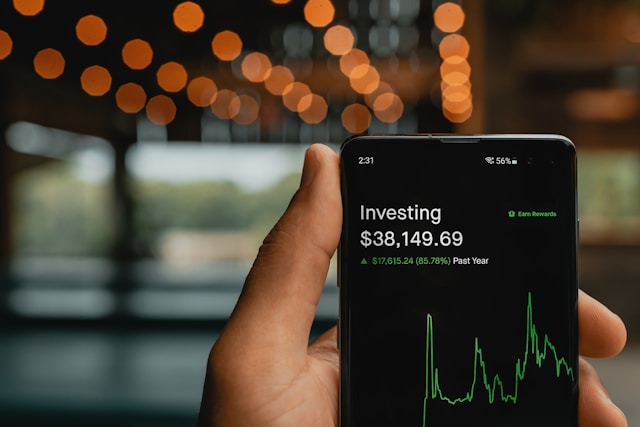Why some stocks look cheap but aren’t—and how Sagehood’s AI-Driven Stock Analysis and AI agents help you see the truth
Introduction: When “Cheap” Isn’t a Bargain
It’s one of the oldest tricks in the market: a stock trades at 8 times earnings, the price is down 40 percent from its peak, and analysts are calling it “undervalued.” To the untrained eye, it seems like a classic value opportunity.
But three months later, it drops another 20 percent.
Welcome to the value trap—a stock that looks attractively priced based on traditional valuation metrics, but is actually deteriorating under the surface.
This post explains what makes value traps so dangerous, why they’re hard to spot with manual analysis, and how AI stock analysis tools—like those offered by Sagehood—help investors avoid them.
Whether you’re new to the market or a seasoned trader, understanding how AI-powered stock picks filter out false bargains could be the most important risk-control strategy in your portfolio.
What Is a Value Trap?
A value trap is a stock that appears to be trading at a discount—based on metrics like price-to-earnings (P/E), price-to-book (P/B), or dividend yield—but is actually cheap for a reason.
It may suffer from:
- Declining or inconsistent earnings
- Structural issues in its business model
- High debt and weakening cash flow
- Poor capital allocation
- Industry headwinds or disrupted growth
Traditional valuation metrics often don’t tell the full story. A low P/E might reflect collapsing earnings, not opportunity. A high dividend yield could signal an impending cut.
The worst part? Many value traps are marketed as hidden gems. Without deep analysis, it’s easy to fall for them.
Why Traditional Analysis Falls Short
Most investors rely on backward-looking data: past earnings, recent dividends, or historical price trends. But value traps often hide their risk in forward-looking factors:
- Worsening margins that haven’t hit the income statement yet
- Declining free cash flow masked by short-term accounting gains
- Rising sentiment on social media even as institutional investors pull out
- Temporary earnings boosts from asset sales or tax benefits
Identifying these early requires more than just a spreadsheet. It requires a system that can process real-time financial data, market sentiment, macro shifts, and behavioral indicators all at once.
That’s where AI-Driven Stock Analysis like Sagehood come in.
How Sagehood’s AI Agents Identify Value Traps
Sagehood uses a network of specialized AI agents to analyze the stock market in real time. Each agent is designed to detect a different layer of market reality—from fundamentals to sentiment to technical behavior.
Let’s walk through how the system filters out value traps using its core agents:
1. Valuation Projection Agent: Looking Beyond the P/E Ratio
This agent doesn’t just screen for low multiples—it builds a forward-looking model that incorporates EBIT trends, margin expansion, and capital expenditures. It asks: Is this stock actually cheap based on where earnings are going?
If a company’s free cash flow is negative and debt is rising—even if P/E is low—the agent flags it as high-risk.
It also applies discounted cash flow (DCF) models and EV/EBITDA comparisons that reflect how professional analysts and institutional investors value businesses—not just retail traders looking at trailing numbers.
Key AI signal: declining forward earnings estimates + deteriorating FCF = likely value trap
2. Financial Health Agent: Digging Into Balance Sheet Risk
Many value traps are companies that used to be strong but have taken on too much debt or are burning through cash.
This agent flags:
- Weak interest coverage ratios
- Falling operating income
- Poor return on invested capital (ROIC)
- Widening gap between net income and cash flow
It helps detect companies that are “fundamentally decaying” while still looking optically cheap.
Example: A company may show positive EPS but negative free cash flow and rising short-term debt. That’s a trap.
3. Sentiment Divergence Agent: Filtering the Hype
Sometimes a stock looks like a bargain and gains traction online—but the price action doesn’t support it.
This agent scans Reddit, Twitter, and financial headlines to gauge sentiment—but it also compares that to institutional flow and price momentum.
If everyone is talking bullishly, but the stock is trending sideways or down, it could mean smart money is exiting while retail enthusiasm inflates.
Key AI-Driven Stock Analysis signal: rising sentiment score + flat or negative price = divergence warning
This helps you avoid the kind of value traps that come wrapped in optimism.
4. Technical Trader Agent: Spotting Structural Weakness
Even if a stock looks undervalued, price action tells a story. The Technical Trader Agent looks for:
- Broken support levels
- Failing momentum
- Bearish chart patterns
- Repeated rejection at resistance
Stocks in long-term downtrends are often value traps in disguise. This agent ensures you don’t mistake a falling knife for a bargain.
A Real Example (Without Fabricating Data)
Let’s take a recent case (generalized for illustration): In early 2024, many analysts touted a legacy consumer electronics company as a turnaround story. The stock traded at a forward P/E of just 9, and its dividend yield was over 6 percent.
But Sagehood flagged it with three alerts:
- Valuation Agent: Forward EBIT was declining, and operating cash flow had turned negative.
- Sentiment Agent: Reddit discussions were up 400 percent, but price action lagged.
- Technical Agent: The stock had failed to break its 200-day moving average for four months.
Result: The stock declined another 18 percent over the next two months—while retail investors kept calling it a “deal.”
Sagehood users avoided the trap.
Why AI Is Better at Spotting Value Traps Than Humans
Value traps often play on our cognitive biases:
- Anchoring: “It used to trade at $60; now it’s $30—so it must be cheap.”
- Recency bias: “It bounced 5% last week. The worst must be over.”
- Confirmation bias: “Everyone online says it’s undervalued.”
AI-Driven Stock Analysis eliminates those biases. It relies on data, not emotion. Machine learning in investingallows platforms like Sagehood to adjust to market regimes—so what worked in 2020 isn’t blindly applied in 2025.
The AI doesn’t care what you want the stock to do. It reports what the numbers, trends, and behavior patterns suggest is most likely to happen.
That’s what gives individual investors using Sagehood a distinct edge.
How to Use Sagehood to Protect Yourself from Value Traps
If you’re worried about falling into one of these false bargain stocks, here’s how to use Sagehood’s tools step-by-step:
Step 1: Run a Valuation Scan
Use the Valuation Projection Agent to check whether the stock’s future earnings and margins justify the current price. If the stock looks cheap but future free cash flow is projected to stay negative, consider it a red flag.
Step 2: Check the Financial Health Agent
Review debt levels, interest coverage, and ROIC. If these are deteriorating, it suggests the company’s core financial strength is weakening—even if the price looks low.
Step 3: Look at Sentiment Divergence
If social media chatter is rising faster than the price, and institutional flows are declining, you might be looking at a stock being propped up by retail emotion.
Step 4: Confirm with Technicals
Avoid buying into long-term downtrends. Let the Technical Trader Agent identify whether the stock has built any real support—or if it’s just bouncing inside a broader decline.
Step 5: Read the Strategy Summary
The Sagehood Agent brings it all together. You’ll get a synthesized recommendation that explains the reasoning, timing, and level of conviction—without jargon.
Final Thoughts: Cheap Isn’t Always Valuable
In a world where headlines chase clicks and stock recommendations spread like wildfire, it’s never been more important to verify before you buy. That low-P/E stock you’re eyeing might be a bargain—or it might be a business in irreversible decline.
AI stock analysis helps you tell the difference.
With Sagehood, retail investors can finally access the kind of advanced tools once reserved for hedge funds and quant firms—without the complexity or cost. You’ll get AI-powered stock picks, detailed breakdowns, and real-time market analysis that help you avoid the most dangerous traps in modern investing.
Don’t buy the dip just because it’s cheaper. Buy it because the data says it makes sense.
Start filtering smarter, trading safer, and investing more confidently.
Explore Sagehood’s full suite of AI investing tools at Sagehood.ai


